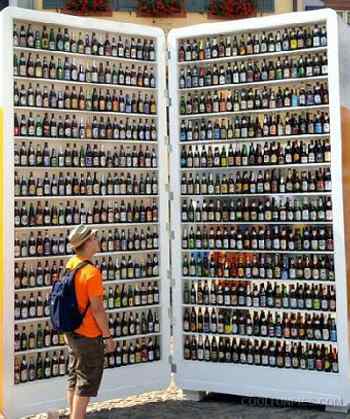
Sure, its convenient, but its expensive as well. Elizabeth Tailer and some friends in Vermont are changing all that. They are handbuilding the ultimate fridge – a community sized freezer in Essex Center, Vermont, where each house in the village get its own shelf. So all you need is a cold-box in the house, and you’re all set.
To make the fridge, they’re using thousands of soda bottles filled with a salt-water mixture and ground up Styrofoam to insulate the structure which optimizes heat loss and updating an ancient idea. “We put 200 grams of salt in it which in a 2 liter bottle will produce a 10 percent by weight salt solution,” Tailer said.
“Ancestors would use an ice house to keep their produce cold throughout the whole year however we don’t have an ice house here. We don’t have a lake that freezes all year so we decided to utilize recyclables,” Elizabeth Tailer said.
This may all sound ridiculous – but it works – We know that because the Eskimos have been doing it for centuries. Every village in Nunavik has a kuakuvik, the Inuktitut word for community freezer or locker. Local Inuit come here to help themselves to what is known in those parts as country food — beluga, seal, goose, ptarmigan, Arctic char, lake trout and caribou.
The Vermont refrigerator-freezer system is built into the side of a hill so that when the earth freezes it will minimize heat loss. The freezer is in the basement of a building which will have multiple purposes from educational to drying foods.
The refrigerator-freezer system is built into the side of a hill so that when the earth freezes it will minimize heat loss. The freezer is in the basement of a building which will have multiple purposes from educational to drying foods. “The idea is to develop then educate around sustainable food, harvesting, storage and culinary delights,” Tailer said.
The Eskimo freezer is equally public spirited: Inside, the kuakuvik is lined with deep plywood shelves. It smells like wood, Arctic air and dried blood — and it feels like community. In a society where, not that long ago, a missed herd of caribou could mean starvation, people learned to share as a way of survival. The meat and fish in the kuakuvik are meant for every member of the community, not just those who are financially strapped.
“The idea is to develop then educate around sustainable food, harvesting, storage and culinary delights,” Tailer said.
They could do worse than study the Inuit
In Akulivik, a town of 600 on a narrow peninsula in Hudson Bay, about 1,850 kilometres north of Montreal, the kuakuvik is located behind the local school. From the outside, it looks like a small blue house made, like most of the buildings up here, out of corrugated steel — only this one has a white freezer door that shuts tightly but is never locked.
Kingalik, who works as a receptionist at the town hall, was disappointed she didn’t find any char in the freezer. All that was there were three cardboard boxes filled with geese, their feathers still shiny, their eyes glassy-looking.
Kingalik had hoped to boil the char for supper.
“My three kids love it that way,” she said.
Instead, the family settled for pizza purchased at the Co-op, one of the town’s two grocery stores.
But Kingalik expects the shelves in the kuakuvik will be filled soon with caribou meat. She laughs at the suggestion people might fight over the caribou when it arrives.
“The locker means something good. Nobody fights about it. I’m proud of the Inuit way we share food,” she said.
While all Inuit can take food from the kuakuvik, priority goes to those who need it most.
2 Responses
Hi – I was also wondering if there are any sources for this?
Hi!
I would like to know if you have any sources of information on this. I am doing a proposal to have a community freezer for students in Montreal, and need a couple of sources. Thank you.